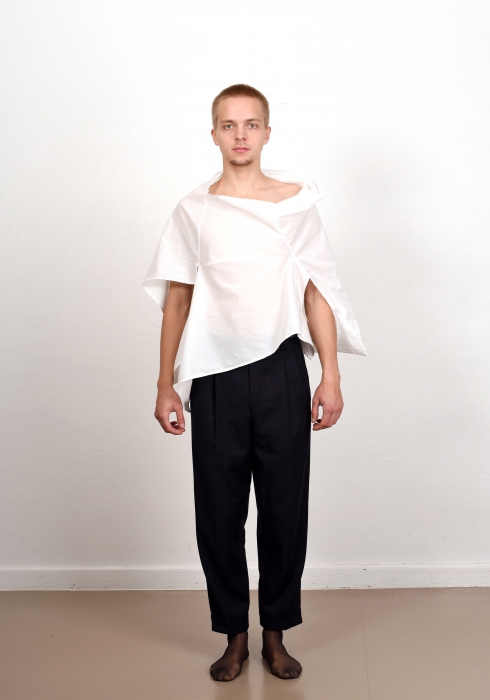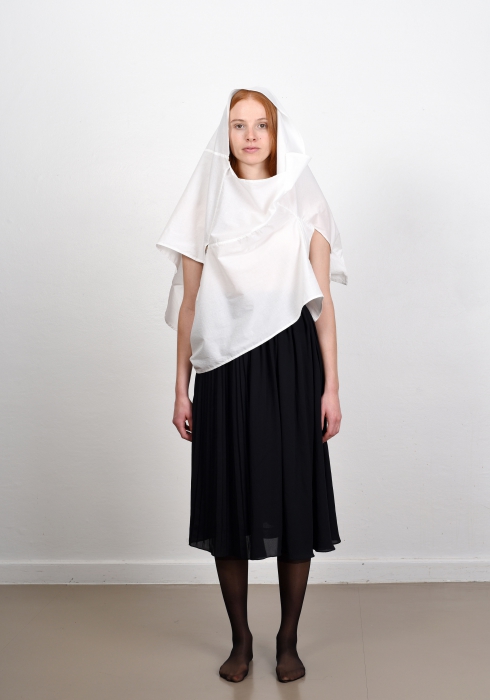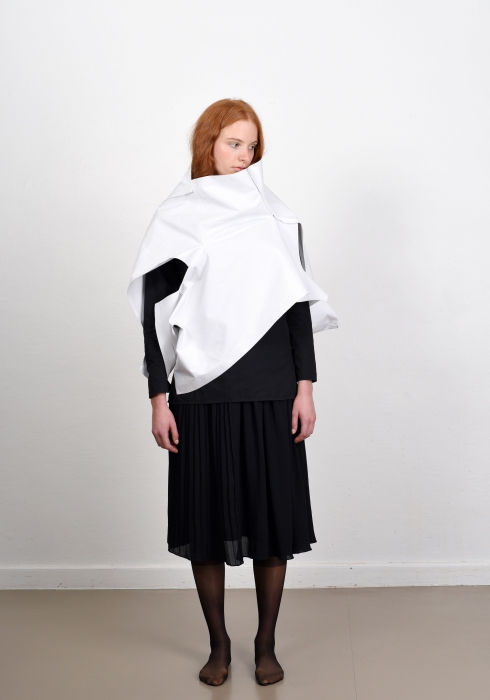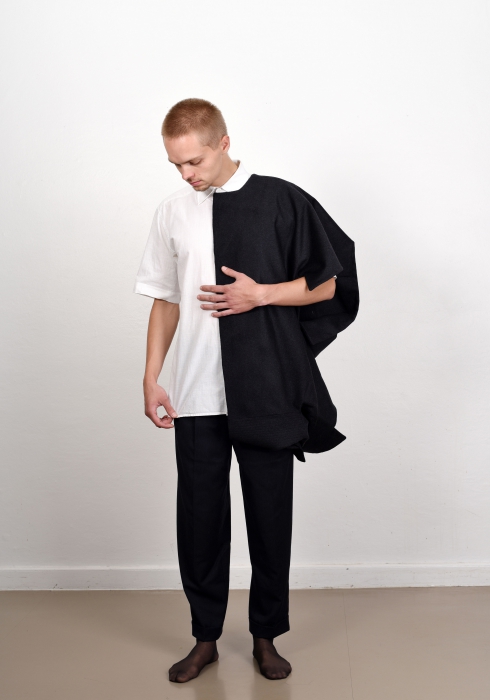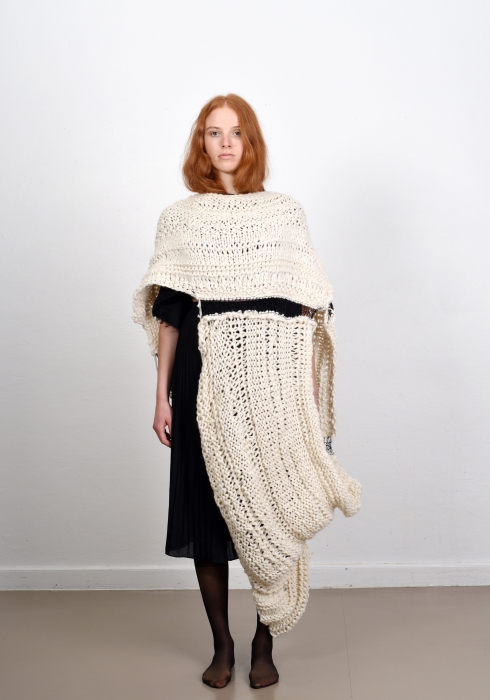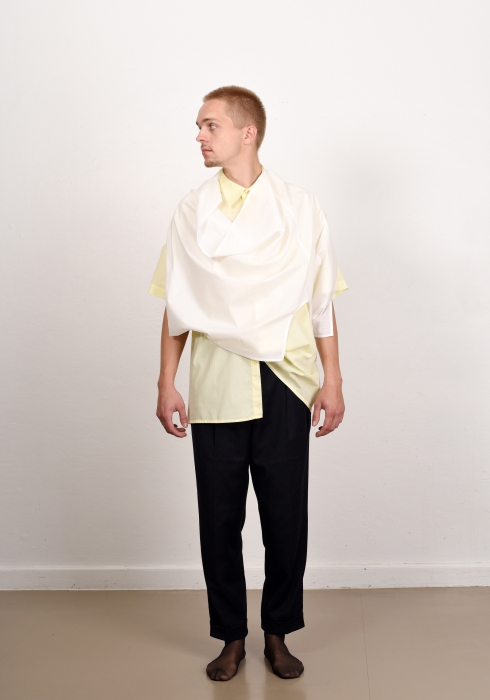.
›GENEALOGIE DER FORM‹ // DESIGNTRANSFER 2015
“‘Genealogy’ refers to tracing lines of descent or ancestry.
One key precept of the genealogical method is that effects need not resemble their causes, as the forces that produce a phenomenon may disguise themselves (…); another is that outwardly similar phenomena may have entirely different meanings because of the difference in the forces that produce them (…). ”
– * Excerpt from „Genealogy“ from The Deleuze
Dictionary (revised Edition) by Bruce Baugh, edited by Adrian Parr. Copyright 2010 by Edinburgh University Press and Bruce Baugh, first published 2005.
What is the potential for design, when you create the process ahead of the product?
This projects questions the design process of fashion – it investigates a new role for the designer as well as the acceptance of silhouettes defined by us as garments. The approach was an explorative and not a descriptive one. It was all about asking questions, reforming rules of existing structures and remaining open to the unexpected.
The beginning lies in the creation of a new workflow prior to the definition of the object. Through a new way of acting we are able to let go our preconceptions of standard clothing and act freely in the moment, to create a new shape – not only an imitation – out of the regular tools used in the industry of fashion.
The design process is in its nature a non-linear development. It includes various resistances and sometimes sharp direction changes throughout the whole design cycle of a shape. My new way of creating is stimulating and using this given characteristics.
Developing the silhouette
The shape of the garment is designed only through communication and pre-determined tools given to a defined group of people; there is no ideal body to fit in, no gender, no images, no sketches – only simple rules to follow or break while creating the three dimensional form.
The experimental environment includes randomness as an active tool to create an individual abstraction of the given. The translation of the draft into material, crafted and finished, gives the garment its soul.
Not only a new silhouette but an own identity is created, lacking a predefined function. The garment is meeting the user on the level of strangers meeting each other the first time. There is a phase of introduction. The consumer has to acquire the use and make the connection between the abstract shape and the own body. Only through the act of dressing the garment takes on an exact definition. Our acceptance of the seen is producing the value to the object and translating it back to our cultured concepts of clothing.
Always a co-authorship
The new garment is always a collaboration between various people in different stages – design, creation, consumption. Involved participants have always an active role in the development of the form – the power of decision making is shifting back and forth from myself to the other.
Betreut von: Prof. Jozef Legrand // Prof. Marloes Ten Bhoemer
Kontakt: // www.susannekasper.com
Creators: Gianni L. // Jana L. // Jozef L. // Sophia G. // Vicki A. // Milan F.
Models: Milan Siegers // Katharina Bellinger // Claudia Alvino // Diego de la Rosa // Shora Fallahi
Assistance: Milan Friedrich
Fotographie: Judith Klapper
Film: Ole Thomas
.
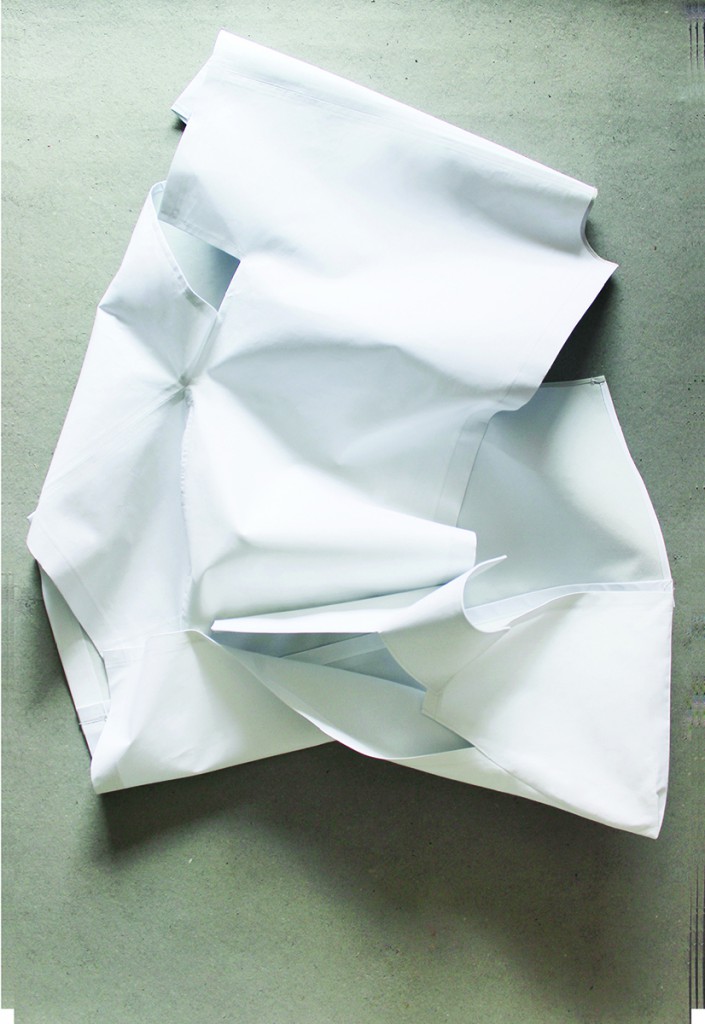
.
›Genealogie der Form‹ // Rundgang 2015
Ich nehme ein Hemd
Ich zerlege diese vertraute Form in ihre Bestandteile
Ich isoliere die einzelnen Komponenten voneinander Ich formuliere Handlungsregeln
Ich bestimme das Werkzeug
Ich gebe all das weiter an andere
Sie setzen die Elemente wieder zusammen
Sie befolgen oder brechen die gegebenen Regeln Sie erschaffen ihre Übersetzung des Gesehenen
Ich nehme die neue Form an
Ich transportiere diese ins Material
Du gibst ihr den Zweck
.
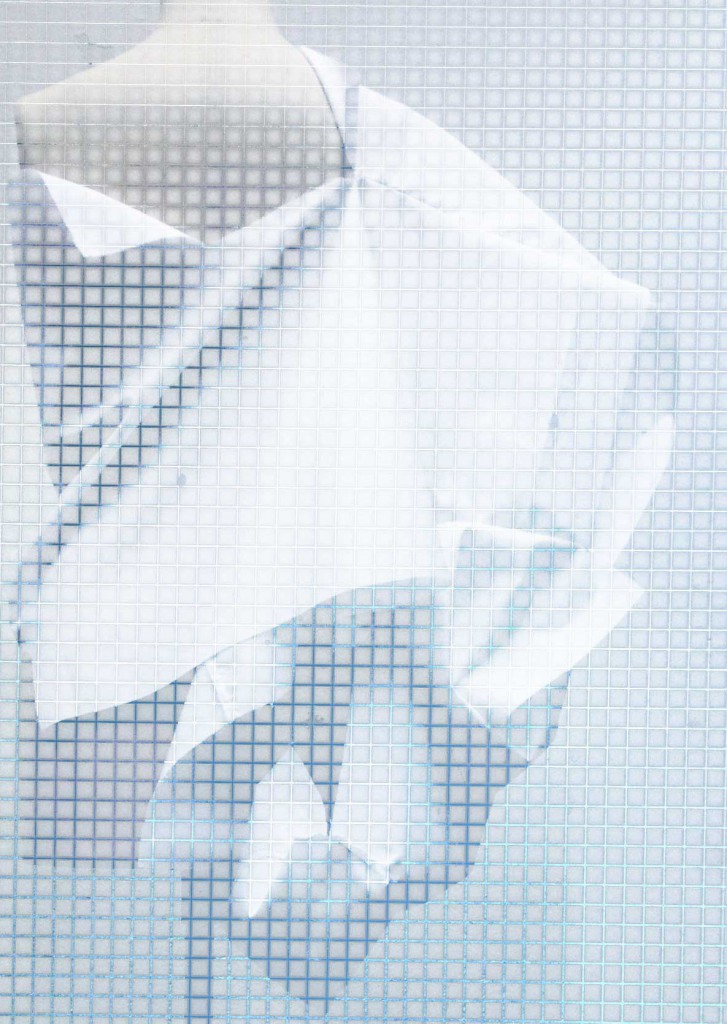
.
Project Proposal (2014)
The beginning
While experiencing the fashion cycle through out all of the steps in sampling and production, a question raised up: What would other people see in the designs I gave them to translate from 2-D in 3-D, if I would reduce my communication to the minimum?
When we create something, we normally communicate everything we know about it. A process of building up always includes numerous people in a specific order. A tight and detailed code is set up throughout the years to guaranty an outcome, as close as possible to the sketch of the designer. But what happens when the communication thread is cut and manipulated? When the translation process of the idea leaves openings? When you mix up the hierarchy of decision making? Randomness made by human hand. The „not-knowing“ as an active tool. Shape created by selected information. The body follows.
Questions to ask, answers to find
Throughout the research process I started to move up and down the layers of my initial idea. Further questions opened up: Who is the designer of the object at the end? How does acceptance and recognition of pieces affect the form? Which clusters and clichés are holding us tight throughout the creation process? How does material, tools and knowledge influence the shaping process? Will a second identical shape ever come out? What value does it have to the person creating it and to the person looking at it?
The process has to be shaped first, not the final product. So the focus lies on the act of composing, to be able to discover the points, which are influencing the direction of the translator.
A constant question interconnected to this project is the definition of authorship, as the creation process will always include minimum one other person. In this, I see a high potential for the composition process. A second mind will help to open up further layers of the shape dozen in the created pieces. Used knowledge and ignorance, while building up a new shape, will fertilize or deform the object. At the end, it will definitely open and restructure the imagination of the common idea. For this, one has to be open up for unpredictable creations. The evaluation of the object itself needs to take place, when the creation process is done. The evaluation of the person to collaborate with, needs to be done beforehand.
